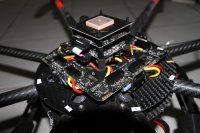189A may well be the maximum capability of your battery pack, but the actual current drawn will depend on your rig. Hopefully it will be less than 189A, otherwise you'll have problems with the battery!

The amperage "rating" of a connector (as well as the wire) assumes a certain temperature rise. Current flowing through a resistance will always produce heat. In the technical world, "current rating" will also specify the temperature rise (e.g. 80A , 30ºC rise above ambient). The RC world rarely specifies the temperature rise, so the "rating" is often meaningless.
Essentially, the objective with a connector is to provide roughly the same resistance to the flow of current as the wires either side of that connection. Therefore it is equally important to know the wire gauge(s). There would be little point in using a connector with a higher "rating" than the wires, but it's definitely asking for trouble to use a connector with a lower rating than the wires. So, first off, you should be considering the total amperage capability of your wiring, not just the connectors.
Consulting the widely-available wire capacity charts tends to lead to confusion. Particularly for household wiring (which is what most charts are showing) it's assumed the wire is enclosed (in a conduit, for example) and therefore has very little heat dissipation capability. Furthermore, the "rating" is likely to be for a very low temperature rise (makes sense - you don't want the wires buried in the walls of your house getting hot, right?). So, for RC applications, none of those available charts really apply. We (usually) have the wires in open air, often with airflow over them, so they can dissipate heat much more readily. We use silicone-sleeved wire because it can withstand around 200ºC before melting. So temperature rise of, say, 60ºC over ambient would be acceptable (though not desirable). Of course, you have to choose and build your wiring system to cope with the maximum current that will flow through it. But when flying around normally - hovering and a bit of maneuvering for AP, for example - the actual current flowing will be substantially less, so we shouldn't be experiencing significant heat rises in the wires or connectors. They can be "warm" after a flight, but if they are "hot" then you probably have something wrong.
If your battery comes with 10AWG wire then you need a connector that has at least the same capacity. You also need to make sure that your wires are also 10AWG from there through to the point where the current is split to go to each ESC (which could be a power distribution board or a soldered spider). If you build a parallel-pack Y-piece then the "tail" (which now has to carry the total current coming from both batteries) should be at least one AWG size bigger - e.g. 8AWG. In reality I wouldn't recommend that approach, though. It would be much better to run two, separate 10AWG wires all the way to the "split off" point.
So, really, it comes down to the question: what connector can handle the same current as a 10WG wire? My (unscientific) answer is: EC5, 4-5mm (or bigger) bullets (depending on design/quality), PowerPole 45A (or bigger), maybe XT60, maybe Traxxas, maybe a few other proprietary designs. Of these, the only one that has both Primary and Secondary Locking (see my recent post) is the PowerPoles. On that basis alone I choose PowerPoles, but there are other advantages too: crimping is actually a more reliable method than soldering (particularly if your soldering skills are below ninja-level) - it's the prefered method in many aerospace and military applications; they are modular, allowing many stacking and keying options as well as colour coding. They can be surface or panel mounted. There are PCB-mount contacts available, rubber cover caps and so on - you are buying into a whole connector "system".
Back on the subject of ratings - the PowerPole 45 is "rated" at only 45A - does that mean it's not as good as, say, an XT60 with a 60A "rating"? Absolutely not! The "45" actually references the maximum wire gauge that the crimp contact can accept - which happens to be... 10AWG

(because in a normal scenario that's the maximum
continuous current you'd pass through a 10AWG wire). The 30A and 15A versions are the same plastic housing and the contacts are the same at the business end, the only difference being the crimp receptacle part, which is smaller on the 30A and 15A versions to accept correspondingly smaller wires.
Oh - and they're around the same price (or cheaper) than the "specially designed for RC" connectors. Not that price should matter for such an important component

Note: successful use of PowerPoles
absolutely 100% requires that you buy the correct crimping tool - about $40.


